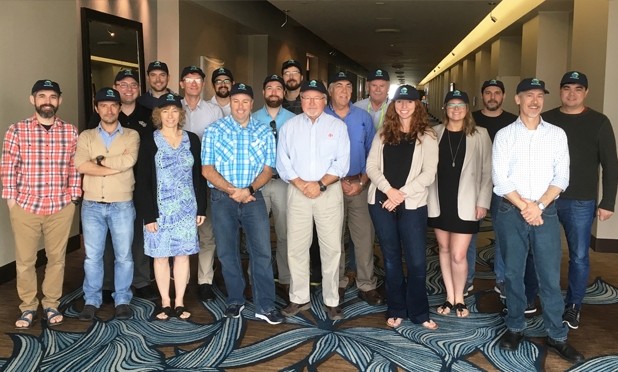The coastal waters of the Gulf of Mexico contain millions of different species of plants and animals. The Smithsonian recently teamed up with local universities, The University of Texas Marine Science Institute and Texas A&M University-Corpus Christi, to put a magnifying glass to those waters and capture just how diverse the plants and animals are. This is being done in a rigorous way that can be replicated and implemented across the world. The effort, known as MarineGeo, is coordinated by the Smithsonian Institution’s Tennenbaum Marine Observatories Network.
When the oceans have lots of different plants and animals, this ‘biodiversity’ can mean that they are also very resilient. Locally, this can mean the difference in bouncing back from destruction from a hurricane or a large red tide event. Even though biodiversity is the heart of ecosystem resilience, it is largely missing from existing ocean observing systems. There is a pressing need for standardized data to understand how coastal ecosystems are changing, the factors that promote resilience to change, and the best practices for conservation and management.
MarineGEO (the Marine Global Earth Observatory) represents a solution. It is a growing global network committed to cataloguing nearshore marine biodiversity, documenting how and why it is changing, and understanding the consequences of that change for ecosystem functioning and resilience. There are already nine sites throughout the United States, Caribbean and Central America. The local Texas universities are the newest members to the network.
Collecting rigorous, standardized data is no small feat. MarineGeo employs existing research and education programs to collect data. The University of Texas Marine Science Institute brings a tremendous amount to the MarineGeo partnership. It manages the Mission-Aransas National Estuarine Research Reserve that is already cataloguing water quality and seagrass according to national protocols. “We’re very excited about partnering with MarineGeo,” said Dr. Ed Buskey, Professor and Research Coordinator of the Mission-Aransas Reserve. “The inclusion of Mission-Aransas Reserve water quality data and seagrass information will ensure that the local Gulf of Mexico and Texas environments are included in the big picture.”
MarineGeo will also harnesses the power of undergraduate and graduate students to conduct experiments across the sites and the globe. One such program is the deployment of squid popsicles. It’s affectionately known as the squid pops program. Students place popsicles of dried squid in different underwater environments and record predation of it with an underwater camera. This experiment allows the students to collect information on predation pressures in lots of different habitats, from large mangrove forests to seemingly bare mud bottoms in an estuary. The University of Texas Marine Science Institute and Texas A&M University-Corpus Christi will be working with MarineGeo to develop programs like squid pops that students can complete in our local bays and coastal beaches.
MarineGeo will build upon these new partnerships in the Gulf of Mexico to conduct long-term observations and experiments that are building the first comprehensive database on the coastal ocean’s physical characteristics and biodiversity, making new scientific discoveries possible.
Researchers from across the nation and United Arab Emirates meet during a workshop held in late March at the Omni hotel in Corpus Christi, Texas to discuss engaging students (undergraduates and graduates) in MarineGeo research projects. First row, left to right: Doug Rasher (Bigelow Laboratory for Ocean Sciences), Joao Canning-Clode (Smithsonian Environmental Research Group), Judy Lemus (Hawaii Institute of Marine Biology), Lee Smee (Texas A&M University-Corpus Christi), Ken Heck (University of South Alabama), Lauren Yeager (The University of Texas Marine Science Institute), Liz Magee (Northeastern University), and Emmett Duffy (Virginia Institute of Marine Science). Second row, left to right: Timothy Hawthorne (University of Central Florida), Aaron Bartholomew (American University of Sharjah), Chris Patrick (Texas A&M University-Corpus Christi), Edward Buskey (The University of Texas Marine Science Institute), Antonio Carlos Marques (University of São Paulo), and Peter Shum (Stanford University). Third row, left to right: Matthieu Leray (Smithsonian Tropical Research Institute), Joey Reustle (Texas A&M University-Corpus Christi), Matt Whalen (Hakai Institute), John Valentine (University of South Alabama). Courtesy photo: Smithsonian Institution, Tennenbaum Marine Observatories Network.










